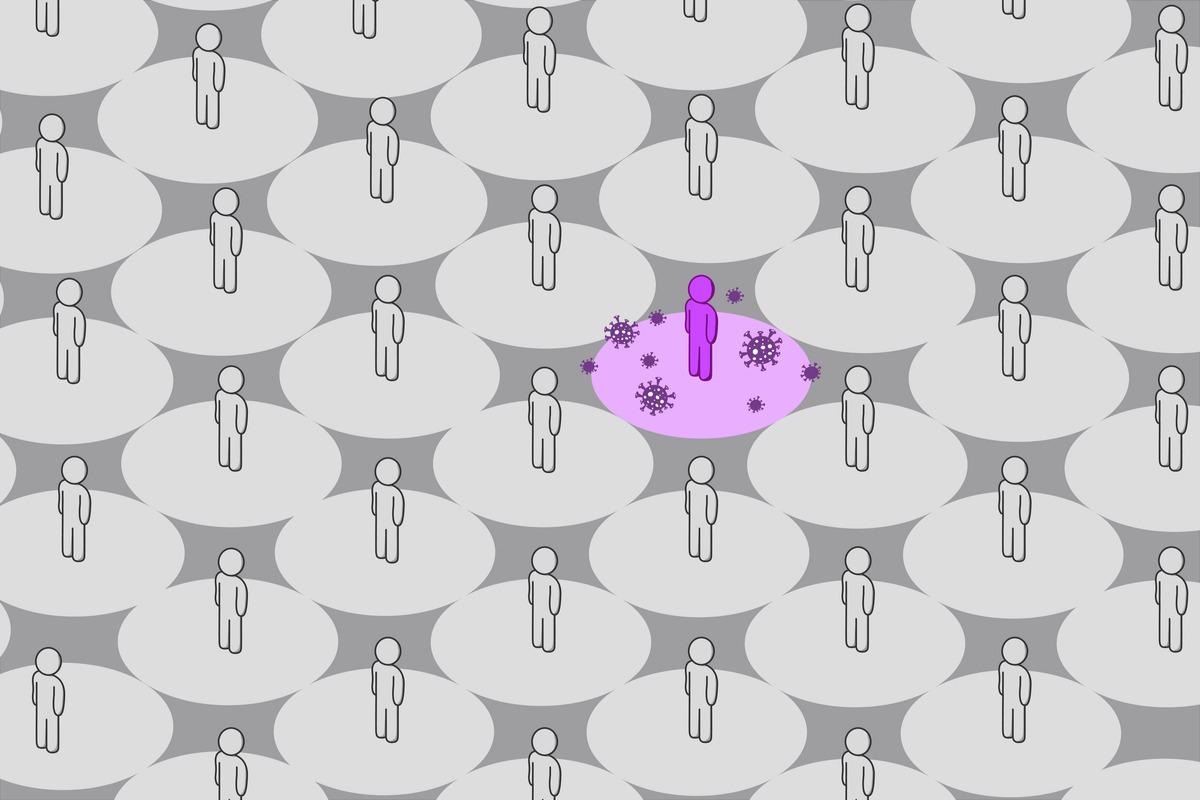In a recent study posted to the medRxiv* preprint server, researchers evaluated whether certain super-spreaders transmit viral infection better and the impacts of individual variance in epidemiological characteristics.

Study: Do Some Super-Spreaders Spread Better? Effects of individual heterogeneity in epidemiological traits. Image Credit: Woeywoey/Shutterstock

 *Important notice: medRxiv publishes preliminary scientific reports that are not peer-reviewed and, therefore, should not be regarded as conclusive, guide clinical practice/health-related behavior, or treated as established information.
*Important notice: medRxiv publishes preliminary scientific reports that are not peer-reviewed and, therefore, should not be regarded as conclusive, guide clinical practice/health-related behavior, or treated as established information.
Background
Super-spreading is at the root of several high-profile outbreaks, including Ebola, the Middle East respiratory syndrome (MERS), human immunodeficiency virus (HIV), and the severe acute respiratory syndrome coronavirus 2 (SARS-CoV-2) pandemic. Although super-spreading is an unchangeable aspect of epidemics, the relative contribution of two super-spreaders to the fate of an epidemic and the features that contribute to super-spreading at the personal level are unclear.
For instance, although an individual's high contact rate or low recovery rate may contribute disproportionately to transmission, it is unknown how these super-spreaders differ in their influences on epidemiological dynamics. Further, epidemiological features frequently correlate with one another, promoting or inhibiting super-spreading. Nevertheless, there is limited data regarding trends of covariation and covariation between which traits are most likely to lead to massive epidemics caused by super-spreading.
About the study
In the present study, the researchers assessed how covariation and variation between characteristics linked with disease transmission (infectiousness and contact rate) and duration (recovery and virulence) of virus-infected people influenced peak epidemic size and super-spreading. The researchers established a stochastic, individual-based variant of a basic susceptible, infectious, or recovered (SIR) model incorporating demography for understanding how heterogeneity affects endemic and epidemic dynamics.
The team accounted for covariation across all combinations of features linked to duration and transmission to assess if some qualities were more likely to cause larger super-spreading or epidemics occurrences. The investigators then evaluated each model combination at three degrees of variation and three R-naught (R0) values.
The researchers performed 50 stochastic simulations of each model, recording the epidemiological dynamics, the number of secondary infections, and each infected person's trait values. They examined the heterogeneity in the number of secondary infections and peak epidemic size for each model.
Findings
The study results indicated that increasing variation nearly always leads to a hike in the peak size of the epidemic throughout all simulations. The only time this was less true was when infectiousness and contact covary, yet this was because higher variance increases the risk of epidemic fade-outs, as previous research has shown. As indicated by the reduction in the dispersion parameter, k, higher variation tends to enhance individual heterogeneity in spreading.
When virulence and recovery covary, the effect of variation was less pronounced. Although the authors observed rising heterogeneity, the distributions of k were widely overlapping, implying that variation has less influence in this case. Interestingly, in the high variation situation, the observed values of k in the present simulations were merely similar to previous empirical estimates.
The impacts of covariation were less significant and were dependent on whether the covarying attributes influenced duration or transmission (intragroup) or both duration and transmission (intergroup) and the overall amount of variation. Covariation only had an effect at the highest degree of variation for intergroup pairings, and the authors reported more super-spreading and large epidemics when attributes covaried negatively or positively. On the other hand, when covariation was positive, the researchers observed large and more variable epidemics in intragroup pairings.
The authors found that the strongest influence of covariation sign was when transmission attributes covary, with epidemic fade-outs significantly more frequent under negative covariation than positive, specifically at high variation. Further, the impact of covariation and variation was the smallest when duration features covary.
The findings indicate no association existed between the epidemic size and the frequency of super-spreading, contrary to few prior studies. In addition, the scientists did not find that more super-spreading results in higher epidemic peaks.
Conclusions
The study findings depicted that covariation mattered when infectiousness and contact rate covary. Peak epidemic size was the highest when infectiousness and contact rate positively covary and lowest when these two factors negatively covary. While the authors did not observe a substantial correlation between more super-spreading and larger epidemic, they reported that the association between peak epidemic size and super-spreading depended on which attributes were covarying. These data indicate that the frequency of super-spreading and the epidemic size may not always be related.
The current findings add another layer of complexity to why certain virus-infected people become super-spreaders. Additionally, the researchers warranted further research to determine when covariation between duration and transmission features occurs to improve the capacity to control and forecast super-spreading and epidemics.

 *Important notice: medRxiv publishes preliminary scientific reports that are not peer-reviewed and, therefore, should not be regarded as conclusive, guide clinical practice/health-related behavior, or treated as established information.
*Important notice: medRxiv publishes preliminary scientific reports that are not peer-reviewed and, therefore, should not be regarded as conclusive, guide clinical practice/health-related behavior, or treated as established information.